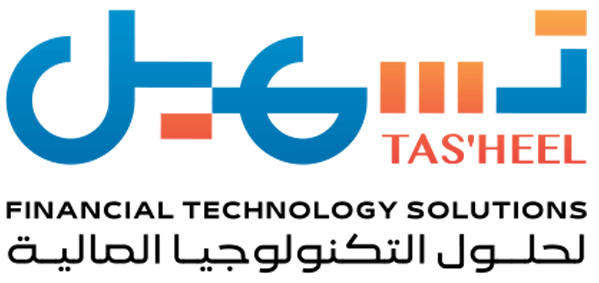At Tasheel, we believe in the importance of delivering high-quality products and services that meet or exceed our clients' expectations. To achieve this, we carefully select the most suitable implementation methodology based on the client's requirements and the nature of the project. Our goal is to ensure the development of innovative and efficient solutions, delivered on time and within the agreed budget.

AGILE Methodology
The AGILE methodology is the ideal choice when flexibility and rapid adaptation to changes are critical to the project. We employ the AGILE methodology in the following scenarios:
- Incomplete or changing requirements: When the project requirements are not fully defined at the outset and require continuous adjustments based on feedback.
- Simple processes: When implementing projects with straightforward and easy-to-execute procedures.
- Continuous client interaction: When the project necessitates close collaboration between the team and the client to ensure immediate response to client feedback.
- Developing innovative products from scratch: In cases where completely new products need to be developed, requiring a creative and iterative process.
- Flexible timelines: When working within tight deadlines that require flexibility to adapt to changes.
- Adjustable budgets: In projects where costs may vary based on the project's development and needs.
By selecting the appropriate methodology for each project, Tasheel ensures the delivery of solutions that align with our clients' goals and expectations while maintaining the highest standards of quality and efficiency. We always strive to be a trusted partner that contributes to achieving sustainable success in the ever-changing business world.
Waterfall Methodology
The Waterfall methodology is a traditional and proven approach to project management, typically used when a structured and linear approach is needed. We rely on the Waterfall methodology in the following scenarios:
- Fixed and clear requirements: When the project requirements are fully defined and known from the beginning, requiring precise execution without significant changes.
- Well-defined processes: In projects that require reliable and consistent procedures.
- Limited client interaction post-requirement gathering: When the project requires minimal client interaction after all requirements have been identified.
- Enhancing existing products: In cases of improving or upgrading existing products.
- Maintenance and upgrades: When conducting scheduled maintenance or pre-determined upgrades.
- Fixed timelines and budgets: In projects that require strict adherence to the timeline and budget from start to finish.

DevOps
DevOps is a methodology aimed at integrating software development (Development) and operations (Operations) to enhance collaboration and efficiency in the software development lifecycle. By adopting DevOps practices, teams strive to achieve seamless integration between development and operations teams, resulting in improved speed and quality of delivery and more effective application management.
Benefits of DevOps

Increased Deployment Speed
Enhancing the speed of deploying updates and applications to production through automation and continuous integration.

Improved Software Quality
Early error detection and quality improvement through automated testing and continuous reviews.

Enhanced Collaboration
Strengthening collaboration between development and operations teams by improving communication and sharing.

Increased Efficiency
Reducing manual intervention through automation and minimizing human errors.

Enhanced Security
Applying best practices at every stage of the software development process.
Challenges of DevOps

Work Culture
Changing work culture to adopt DevOps practices can be challenging.

Tools and Technologies
Selecting the right tools and implementing them effectively may require time and training.

Security
Ensuring security in the automation and continuous deployment process can be challenging.
Key Principles of DevOps

Continuous Integration (CI)
- Objective: Frequently and quickly integrate code changes into a main branch.
- How it works: New code is pushed to a central repository where automated tests are run to ensure no errors are present. This helps detect issues early and reduces integration problems.
Continuous Delivery (CD)
- Objective: Provide the capability to deploy changes to the production environment frequently and quickly.
- How it works: After continuous integration, updates are automatically deployed to staging or testing environments where they undergo thorough testing before being released to production.


Continuous Deployment (CD)
- Objective: Automatically deploy updates to the production environment after passing all testing stages.
- How it works: Similar to continuous delivery, but adds the step of automatically deploying updates to production without manual intervention.
Monitoring and Logging
- Objective: Monitor performance and log data to ensure system stability and detect issues early.
- How it works: Tools are used to measure performance, interact with applications, log errors, and provide reports and analytics to help teams improve the system.


Automation
- Objective: Reduce the need for manual intervention and increase efficiency by automating various processes.
- How it works: Tasks such as building, testing, and deployment are automated using tools like Jenkins, GitLab CI, and CircleCI.
Collaboration
- Objective: Improve communication and collaboration between development and operations teams.
- How it works: Encouraging continuous interaction and communication between teams, fostering a culture of sharing and accountability.

Common Tools in DevOps

Version Control
- Examples: Git, GitHub, GitLab.
- Objective: Manage and document changes in the code and share updates among team members.
Continuous Integration and Continuous Delivery Tools
- Examples: Jenkins, Travis CI, CircleCI.
- Objective: Automate software building, integration, and deployment.


Configuration Management Tools
- Examples: Ansible, Puppet, Chef.
- Objective: Centrally and uniformly manage and update server configurations.
Monitoring and Logging Tools
- Examples: Prometheus, Grafana, ELK Stack (Elasticsearch, Logstash, Kibana).
- Objective: Monitor system performance, log events, and analyze them.


Containerization and Orchestration Tools
- Examples: Docker, Kubernetes.
- Objective: Manage containers and orchestrate their deployment and scaling
